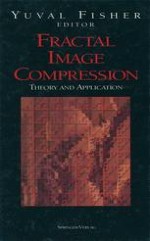1995 | Buch
Über dieses Buch
What is "Fractal Image Compression," anyway? You will have to read the book to find out everything about it, and if you read the book, you really will find out almost everything that is currently known about it. In a sentence or two: fractal image compression is a method, or class of methods, that allows images to be stored on computers in much less memory than standard ways of storing images. The "fractal" part means that the methods have something to do with fractals, complicated looking sets that arise out of simple algorithms. This book contains a collection of articles on fractal image compression. Beginners will find simple explanations, working C code, and exercises to check their progress. Mathematicians will find a rigorous and detailed development of the subject. Non-mathematicians will find a parallel intuitive discussion that explains what is behind all the "theorem-proofs." Finally, researchers - even researchers in fractal image compression - will find new and exciting results, both theoretical and applied. Here is a brief synopsis of each chapter: Chapter 1 contains a simple introduction aimed at the lay reader. It uses almost no math but explains all the main concepts of a fractal encoding/decoding scheme, so that the interested reader can write his or her own code. Chapter 2 has a rigorous mathematical description of iterated function systems and their gen eralizations for image encoding. An informal presentation of the material is made in parallel in the chapter using sans serif font.
Anzeige
